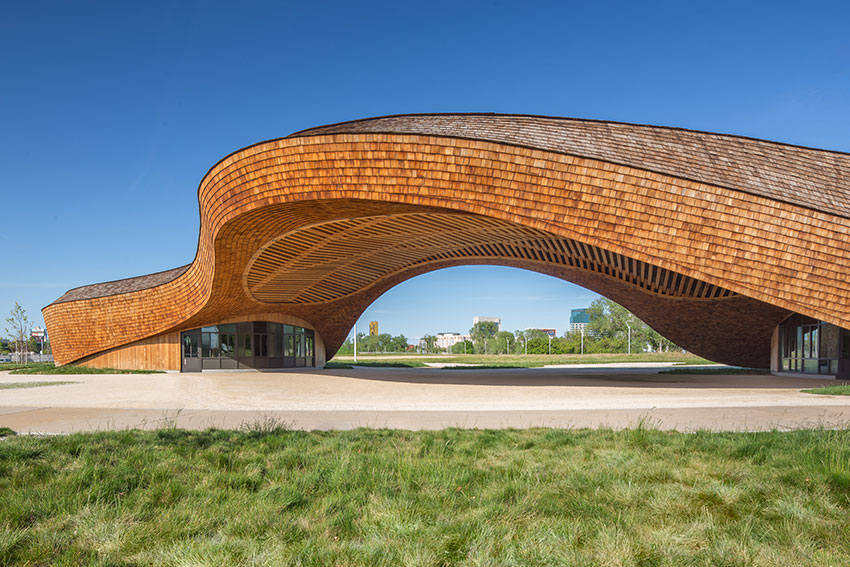Architecting Change
 1 AIA LU/HSW; 1 GBCI CE Hour; 0.1 ICC CEU; 0.1 IACET CEU*; 1 AIBD P-CE; AAA 1 Structured Learning Hour; This course can be self-reported to the AANB, as per their CE Guidelines; AAPEI 1 Structured Learning Hour; This course can be self-reported to the AIBC, as per their CE Guidelines.; MAA 1 Structured Learning Hour; This course can be self-reported to the NLAA.; This course can be self-reported to the NSAA; NWTAA 1 Structured Learning Hour; OAA 1 Learning Hour; SAA 1 Hour of Core Learning
1 AIA LU/HSW; 1 GBCI CE Hour; 0.1 ICC CEU; 0.1 IACET CEU*; 1 AIBD P-CE; AAA 1 Structured Learning Hour; This course can be self-reported to the AANB, as per their CE Guidelines; AAPEI 1 Structured Learning Hour; This course can be self-reported to the AIBC, as per their CE Guidelines.; MAA 1 Structured Learning Hour; This course can be self-reported to the NLAA.; This course can be self-reported to the NSAA; NWTAA 1 Structured Learning Hour; OAA 1 Learning Hour; SAA 1 Hour of Core Learning
Learning Objectives:
- Assess and describe current and emerging social, economic and technological trends impacting the built environment, urbanism and the business of architecture.
- Explain how community-centered participatory design and the strategic use of greenspaces in urban environments can benefit the health of individuals, communities and cities.
- Define the built environment’s significant contribution to carbon emissions, and learn how designers are using lifecycle analysis to measure a building material’s impact on the carbon footprint of a project.
- Identify key factors contributing to the cost of mixed-use and multi-family developments, along with planning and design strategies that can help make these projects more affordable.
This course is part of the Mass Timber Academy
A Modern Barn Raising | Barn Pavilion, Sacramento, California
Placemaking can revitalize underused urban areas, inviting social connections between diverse citizens and demographics. Located in Sacramento’s once-struggling Bridge District, the Barn Pavilion is a modern take on a community barn raising. The sinuous, wood-shingle-clad timber structure, now known simply as the Barn, gives new life to Sacramento’s once-deteriorating Bridge District.

Photo courtesy of Chad Davies
The Barn
The Barn features a curvilinear design that emerges out of the pavement, welcoming passersby into its shaded nooks. The public plaza below the Barn hosts gatherings, while inside you can shop, wine and dine, or wander, making your way out to the extensive open-air breezeway. The Barn’s multifunctionality and warm organic atmosphere turns this public space into a community place that is both beautiful and functional. Its fluid, sculptural form makes for ambidextrous architecture, adaptive to a multitude of uses.
Design choices can have big impacts on community health and well-being—a well-designed building or public space can foster a sense of belonging by creating third places between work and home that invite social connection and interaction. In particular, participatory design invites community engagement and responsibility. By centering the community at the heart of the design process, participatory design can foster community ownership and pride.
Designing For Density: A Built Environment To Accommodate Growing Populations
The Rising Need for Affordable Housing and Mixed-Use Development
For community building and placemaking to thrive, cities need safe, accessible, and affordable housing, inclusive of a broad socioeconomic spectrum of people. This is becoming even more imperative as urban population growth surges.
By 2050, two-thirds of the world’s population will live in urban areas. Outside traditional city centers, urban-adjacent suburbs and mid-sized cities and towns also are seeing rapid growth, fueled in part by a shift to remote working in response to the COVID-19 pandemic. As a result, the demand for affordable housing is outpacing supply, with new multifamily units renting at prices that are cost-prohibitive for middle- and low-income renters.
Without cost-effective housing options—and a diverse mix of units from rentals and cooperatives to social and market housing—urban centers risk becoming destinations for “global elites.” In some cases, high-priced investment properties sit empty while a rapidly rising population can’t find housing. Nearly two-thirds of renters nationwide say they can’t afford to buy a home, and saving for a down payment is out of reach when home prices are rising at twice the rate of wage growth. These challenges, compounded by a global pandemic, have only intensified America's housing problems.
At the same time, infrastructure, amenities, and mixed-use commercial space is needed to support population growth. But land available for such development is costly and scarce, highlighting the need to optimize the use of existing space in urban centers. And now, these same cities must consider how to adapt mixed-use development for a post-pandemic world.
Given all these challenges, how can developers, architects, and contractors boost affordability and reduce multifamily housing costs? How can they make better use of available land and optimize the use of existing mixed-use commercial spaces?
What Impact Can Design Teams Have On Density and Affordability?
To answer these questions, designer and urbanist Hannah Hoyt, Gramlich Fellow at Harvard University’s Joint Center for Housing Studies, interviewed 30 professionals working in the development sector.
The findings? To help make housing more affordable, the report recommends design teams consider multiple strategies that can curb development costs in three categories: land costs, soft costs, and hard costs, with a focus on what savings are within their day-to-day control and can be passed on to occupants.
Land costs refer to the cost of acquiring land—and amounts to approximately 10-20 percent of total development costs for a typical multifamily project. Examples of strategies to maximize land value include selecting a site that offers economies of scale, considering design solutions for oddly shaped lots or scattered sites, and renovating, converting, or co-locating housing with existing buildings.
A standard approach to site evaluations that considers everything from soil and site clearance to grade and zoning can, according to the report, go a long way to identifying scalability and avoiding unexpected site preparation costs.
Hard costs are the costs of construction, which can be divided into four subcategories: substructure and site prep, shell and structure, interiors, and services. Hard costs amount to 50-70 percent of total costs. Examples of strategies that can have a positive impact on hard costs include designing units for maximum flexibility and efficiency, investigating new techniques and materials, and investing in energy and water performance to realize long-term savings for a project.
Finally, soft costs include all other costs—financing, design, engineering, permitting, and any impact fees. In this category, engaging general contractors early and as partners can help realize savings, and sharing more information with subcontractors can result in more accurate cost estimating.











